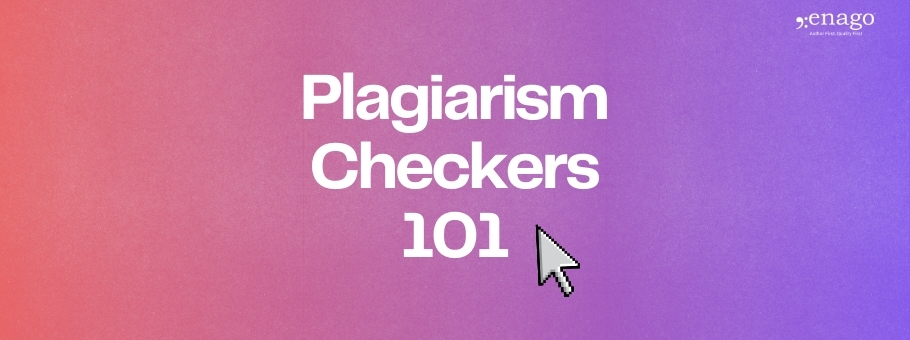Plagiarism Checkers: Tools, Acceptable Levels, And Best Practices

In the evolving landscape of academic writing, originality underpins the principles of credibility and ethical research. Plagiarism whether it’s intentional or accidental can severely harm reputations, lead to academic misconduct, and even result in the rejection of research manuscripts. To counteract such risks, plagiarism checkers have become essential for academic professionals, students, and institutions striving to uphold integrity. This blog explores why plagiarism checkers matter, their underlying mechanisms, common challenges like inaccuracies, acceptable benchmarks for plagiarism, top tools for academic use, and even the role of AI detectors compared to plagiarism detection tools.
Why Plagiarism Checkers Are Crucial in Academia
Preventing plagiarism is more than just a legal and ethical obligation it actively promotes scholarly innovation and protects authors’ authenticity. Here’s why plagiarism checkers have become indispensable:
- Ensuring Academic Integrity Plagiarism undermines research credibility. It can lead to reputational harm, legal consequences, or outright rejection of manuscripts by journals and publishers.
- Improving Citation Accuracy Researchers may unintentionally misattribute or neglect key sources. Plagiarism checkers help identify such omissions, promoting accurate and comprehensive citations.
- Adhering to Publication Standards Publishers and academic journals enforce strict guidelines against plagiarism. Using a reliable plagiarism checker ensures compliance with these standards.
- Educating the Next Generation Many students plagiarize unknowingly. By integrating plagiarism tools into teaching workflows, institutions can emphasize ethical writing practices and proper paraphrasing.
How Plagiarism Checkers Work
Plagiarism checkers harness advanced algorithms to detect overlaps and similarities. Here’s how they function:
- Database Cross-Referencing Tools compare submissions against databases of academic papers, journals, books, and billions of web pages.
- Identification via AI Advanced checkers use Natural Language Processing (NLP) and artificial intelligence to detect paraphrased content, not just verbatim matches.
- Highlighting Matches Platforms like Grammarly and Turnitin generate detailed reports with highlighted flagged sections, offering links for source verification. For instance, Grammarly scans online sources and databases of over 16 billion entries, while Turnitin excels in checking against exclusive academic records.
Limitations of Plagiarism Checkers: Are They Always Accurate?
Although plagiarism detection tools are invaluable, they do have constraints which authors must be mindful of:
- False Positives Properly cited material or common phrases can sometimes be flagged unnecessarily.
- Limited Context Understanding Purely algorithm-driven results often miss nuances, requiring manual review for a comprehensive evaluation.
- Gaps in Database Coverage No tool has universal access to every intellectual property, leaving the possibility of undiscovered plagiarism.
- Challenges with Multilingual Content Checkers may fail to effectively analyze texts in languages or styles outside their core programming scope.
Acceptable Plagiarism Levels: What Do Journals Require?
Acceptable thresholds for plagiarism vary across institutions. Broadly:
- 0%–10%: Considered safe; usually includes citations and shared terminology.
- 10%–20%: Demands caution. This range may indicate poor paraphrasing or missing attributions.
- Above 20%: Unacceptable in most cases, necessitating significant revisions. It’s crucial to recognize the difference between numeric percentages and ethical intent when interpreting plagiarism reports.
Top-Rated Plagiarism Checkers for Academics
Here are five widely used plagiarism detection tools:
- Turnitin
Best for: Educational institutions.
Special Features: Integration with academic platforms, comprehensive database access.
Drawback: Primarily licensed to institutions. - Enago’s Plagiarism Checker
Best for: Academic and scientific writing compliance.
Special Features: Uses Turnitin’s database with robust support for research. - iThenticate
Best for: Professional researchers and journal-ready submissions.
Special Features: Tailored towards manuscripts, with publisher-level screening. - Grammarly Premium
Best for:Versatile uses beyond plagiarism checking.
Special Features: Combines grammar correction with plagiarism analysis across web and academic sources. - Quetext
Best for: Budget-conscious individuals seeking basic functionality.
Special Features: Intuitive design and accessible freemium features.
Plagiarism Checkers vs. AI Detectors: Which Should You Choose?
As AI usage expands, determining the originality of content has become more nuanced. Here’s how plagiarism checkers and AI detectors differ:
- Functionality – Plagiarism Checkers: Detect borrowed text across copyrighted sources.
AI Detectors: Spot machine-generated content, protecting human authorship standards. - Ideal Use – Checkers verify existing content authenticity.
AI detectors address concerns unique to ChatGPT and similar generators. Ultimately, plagiarism checkers are more robust for ensuring compliance in academic research.
Tips for Maximizing the Use of Plagiarism Detection Tools
- Understand Institutional Policies Refer to your university or journal’s guidelines to set appropriate thresholds.
- Cross-Verify Reports Manually assess flagged sections for relevant context.
- Prioritize Multiple Tools Tools like Enago and Grammarly can complement each other, ensuring thoroughness.
- Proper Citation Practices Follow established guidelines (e.g., APA, MLA), ensuring ethically sourced research.
Conclusion
Plagiarism detection tools have redefined accountability in research and scholarly writing. They remain vital for manuscripts striving toward credibility, compliance, and global publishing standards. However, using them effectively—alongside maintaining ethical research practices is key to success in academic writing.
Frequently Asked Questions
Why are plagiarism checkers important for academic writing?▼
Plagiarism checkers ensure academic integrity by detecting instances of copied or improperly attributed content. They help researchers avoid ethical issues, such as reputational damage or manuscript rejection, by verifying originality. These tools are essential for accurate citations, compliance with publication standards, and educating students on proper writing practices.
How do plagiarism detectors work?▼
Plagiarism checkers use advanced algorithms that cross-reference submissions against massive databases of academic papers, journals, books, and web content. AI and Natural Language Processing (NLP) algorithms are also used to identify paraphrased content, not just direct text matches, providing a more thorough analysis of potential plagiarism.
What are the limitations of plagiarism checkers?▼
While plagiarism checkers are effective, they can generate false positives by flagging properly cited material or common phrases. They also struggle with understanding the context of content, and gaps in their database coverage may lead to missed instances of plagiarism. Multilingual texts may be inaccurately assessed due to limited language compatibility.
What are acceptable plagiarism levels in academic publishing?▼
Most academic institutions and journals accept a plagiarism threshold of 0%–10%, which typically includes citations and common terminology. A 10%–20% range requires caution, indicating possible paraphrasing issues. Plagiarism above 20% is generally considered unacceptable and necessitates substantial revisions for publication.
How can plagiarism checkers complement AI detectors in research writing?▼
Plagiarism checkers focus on detecting text borrowed from external sources, while AI detectors identify machine-generated content. For academic writing, plagiarism checkers are crucial for verifying the authenticity of research, while AI detectors ensure that submissions maintain human authorship. Using both tools ensures a comprehensive evaluation of manuscript originality.




